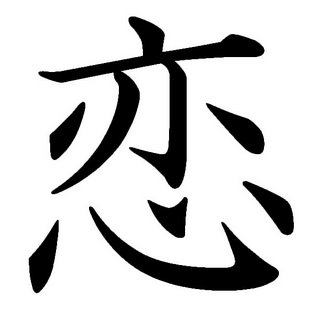one-letter kanji of love: ai

The structure of the kanji above describes a person turning around with painful reluctance as he or she is leaving their loved ones. In ancient Japanese, it read "to grieve," meaning feeling grief over people you're leaving behind. Such feelings turned into love.
The concept of "love" didn't exist in Japan until importation of western culture. By "love" here, I mean romantic feelings associated with kissing with passion or hugging somebody tight. I'm not saying such behavior wasn't around in Japan. Japanese people had many children. It's just western and Japanese loves were not the same in the first place.
Before the importation of western culture, instead of the kanji above, Japanese used "jin" or "tyu" to refer to loving someone.
Maybe that's one of the reasons why Japanese people are considered quiet and reserved compared to others. I read a survey which found that couples in Japan have less sex than in any other country. Really? I don't know ...

